BLOG ARTICLE
11 Podcast Marketing Strategies For 2025
Last updated: 12/22/2025
Last updated: 12/22/2025
Ever wondered why some podcasters rake in millions of listeners while others can't seem to hit 100 monthly listeners despite having top-notch content?
The truth is, every podcaster has to nail down effective marketing to build their audience and foster a community around their show. The good news is, it doesn't have to be rocket science! In this guide, we're delving into 11 actionable marketing tips that you can start implementing right away to propel your show to the next level.
Specifically, the steps are not hard sell but practical podcast promotion strategies that focus on building a strong online presence for your show so that whenever a listener thinks of listening to a podcast in your niche, you come to mind.
PS: If you're new to podcasting and want some baseline ideas to grow your podcast, check out our free ebook. But if you're looking for more advanced podcast marketing strategies, read on.
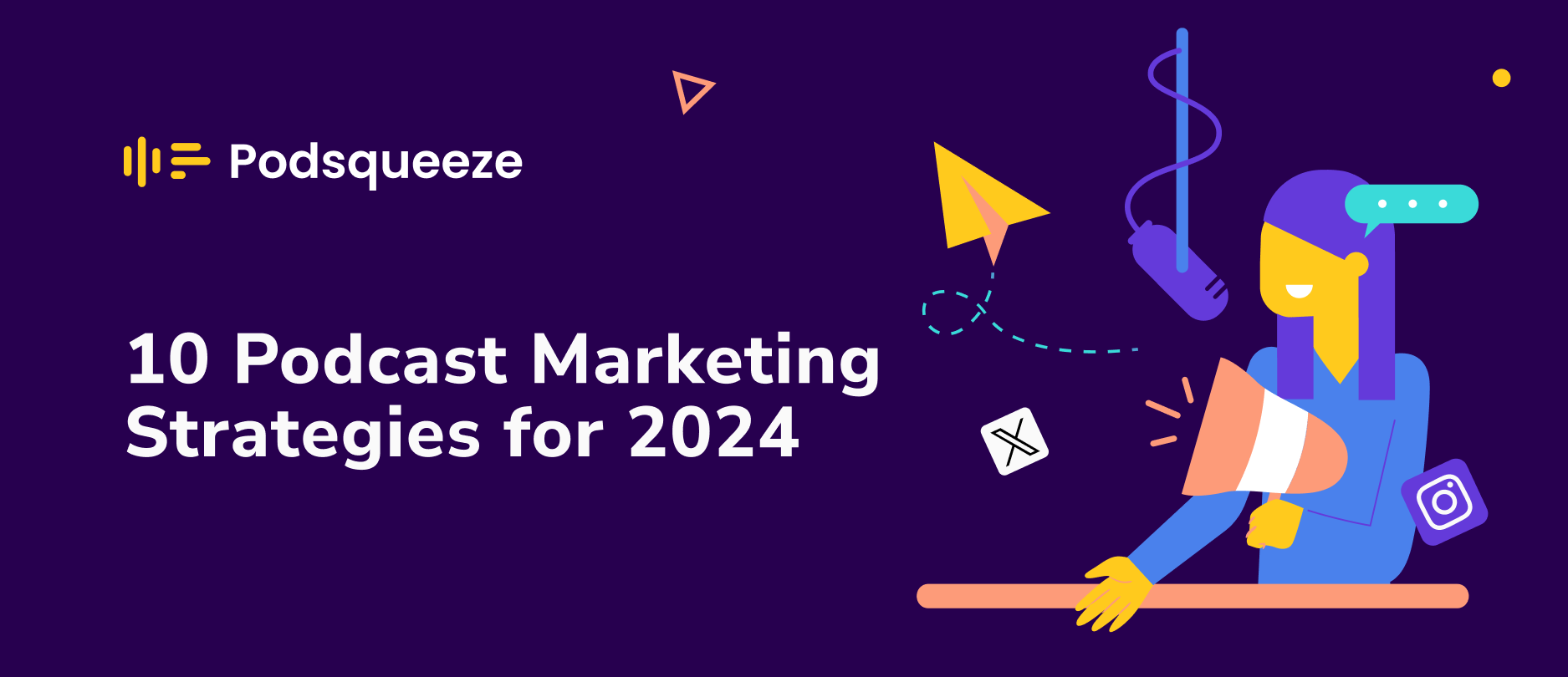
What's a Podcast Marketing Strategy?
Podcast marketing involves employing a variety of strategies, both short and long-term, to boost the reach, discoverability, engagement, shares, and overall success of a podcast.
Navigating your podcast journey involves striking a balance between immediate results and consistent growth. While some marketing techniques deliver quick wins, remember that podcast success is more like a marathon than a sprint. Consistency - regular episodes, steady promotion, and audience engagement - is your secret weapon.
Be agile, experiment with different approaches, and focus on scaling what works best for your show. And always keep in mind that perfection isn’t the goal; progress is.
10 Actionable Podcast Marketing Strategies
1. Implement Adaptive Content
Age 12 to 34 make up the biggest chunk of podcast listeners. That means your listeners are probably a combination of millennials and Gen Z, unless your podcast is specifically tailored for a niche of an older demographic. With that, your content needs to appeal to both groups.
Adapting your content to both groups isn't hard since they both have many similarities. For example, like Ali Abdaal, you can bring in guests from both age groups to add diverse perspectives and appeal to both audience groups.

Also, both groups grew up with technology as a big part of their lives, so including tech trends in your content (as it relates to your niche), social media, career, and work-life balance will help you reach both groups effectively.
2. Hijack Trending Topics
There are always many trending topics online and adapting them to your podcast can be what you need to uplift your show.
For example, during the spike of Game of Thrones, content creators played off the trend by using them as content inspiration. Here's how Hootsuite also joined the trend to introduce its list of top social media platforms.
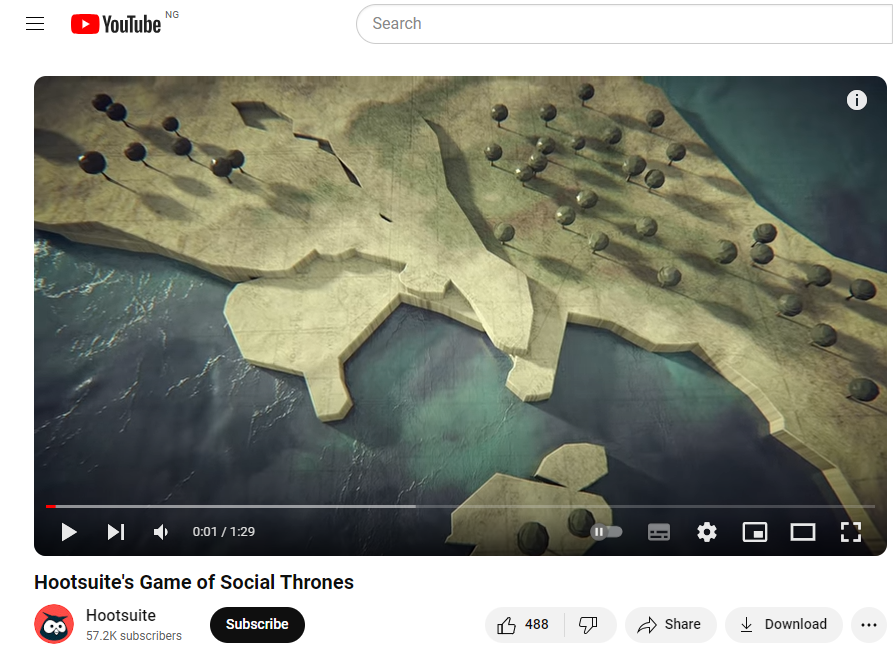
Instead of bland “Top social media platforms”, Hootsuite strategically used “Game of Social Throne”.
How can you apply this strategy in your industry? Explore current trends and incorporate relevant elements into your content. For instance, consider integrating trending topics into your title to enhance click-through rates, as demonstrated in Hootsuite's example.
3. Find Successful Podcast Topics
Thanks to popular podcast directories like Spotify, Apple Podcast, YouTube, Castos, etc, you don't have to craft your podcast/episode's topic from scratch easily because someone with better training, resources, and time has done that for you.
Here's how to find effective topic ideas for your podcast;
(Let's say you want to create an episode about podcast marketing).
- Step 1: Go to Spotify and input your keyword (but in a similar niche). Instead of inputting “podcast marketing” into Spotify which will bring up competitors, you'll type keywords like “social media marketing”.
- Step 2: Analyze the top 5 podcast episodes from the top results. Check their transcripts, the topics, relevant keywords they used, their descriptions, etc.
- Step 3: From there, you can use the result of what you analyzed to craft your topic, description, and other elements that make up your episode.
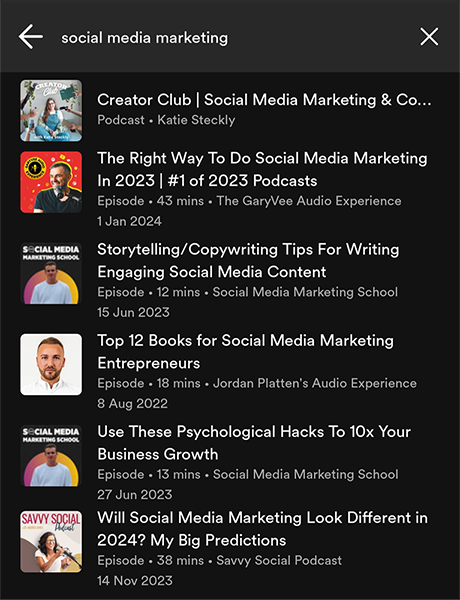
For example, from the screenshot above, you can generate topics like:
- 10 Podcast Marketing Tips for Small Podcasters
- The Right Way to Do Podcast Marketing in 2024
- The 22 Books To Read as Podcast Content Creators
- What's Podcasting Going to be Like in 5 Years?
Following this topic research strategy will effectively aid in generating viral content ideas because you're getting inspiration from top results in shoulder niches.
Note: Remember, the tip here is to inspire your creation and not to copy and paste other people's work.
Another effective method to find highly relevant topics to talk about in your podcast is to use our free podcast topics generator.
All you have to do is enter your podcast niche, and it’ll generate a list of related topics, complete with Google search volume, competition levels, expected Google clicks, and projected YouTube views, to help you prioritize which topics to cover next.
Learn more about our podcast topics generator.
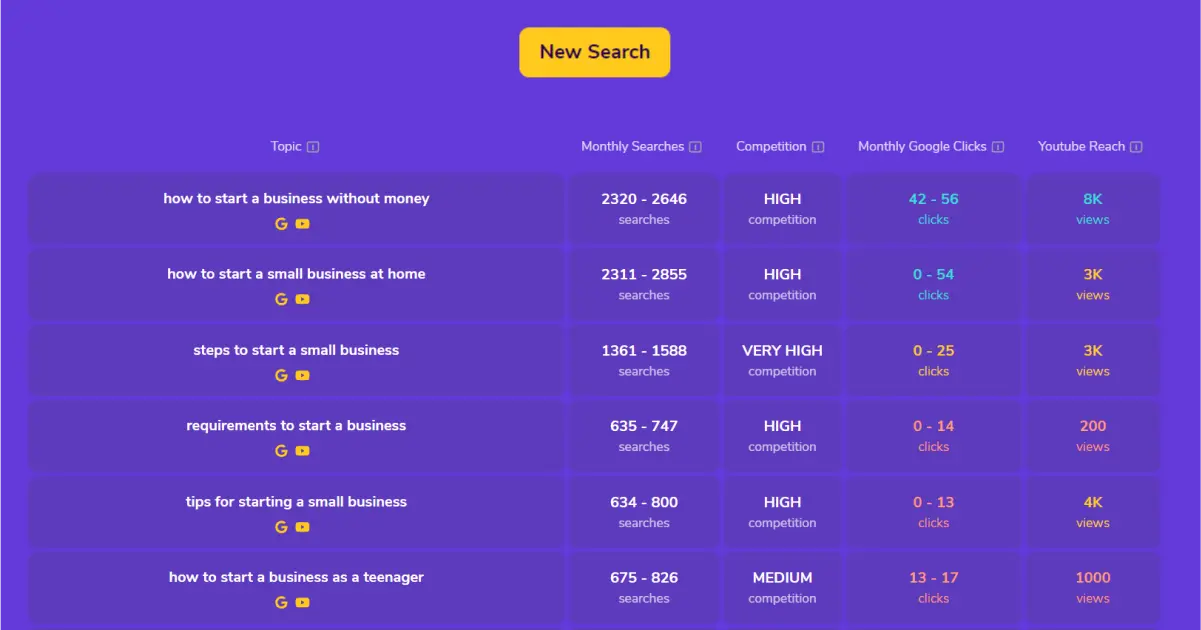
4. Invest in Strategic Content Repurposing
One of the best podcast marketing strategies is content repurposing.
You can repurpose your content in different formats such as;
- Convert podcast to text: Podcast transcription is one of the most effective ways to repurpose your content. Not only does it streamline your workflow by making it easier to navigate episodes during post-production, but it also adds value for your listeners. Plus, you can use transcripts to create blog posts, social media content, and more.
- Podcast clips: Where you break your video podcast into short videos for sharing on YouTube shorts, Instagram reels, Facebook shorts, TikTok, or Twitter (X).
- Audiograms: If you have an audio-only podcast, audiograms let you repurpose your audio recording into visual bites on social media.
- Quote images: Tweetable tidbits might work for Twitter but you might need image-based posts to thrive on other platforms such as Instagram and Pinterest. Consider extracting insightful statements from your episodes and transforming them into visually appealing images or let Podsqueeze to that for you automatically.
For a more dedicated guide on how to repurpose your episode on social media, check out our guide.
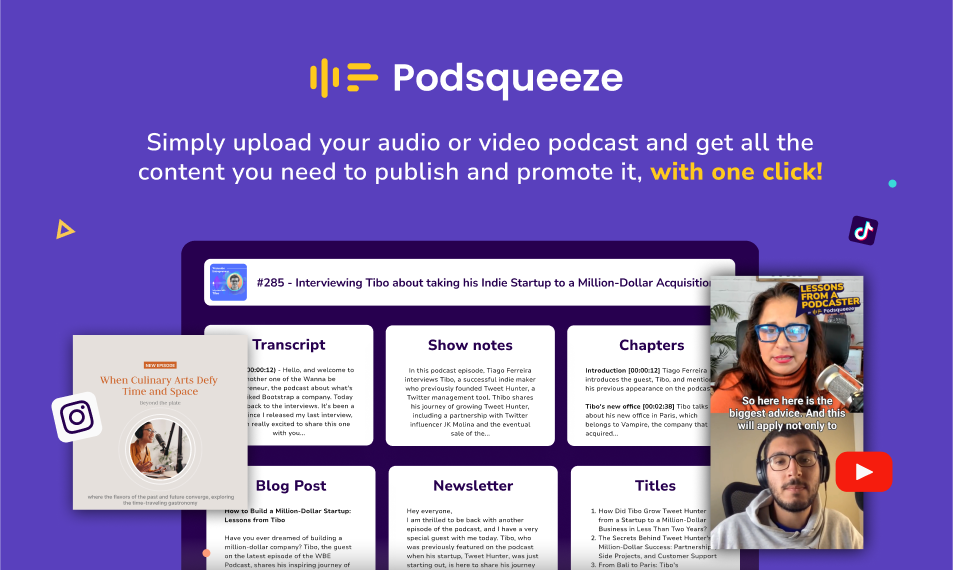
5. Super-Personalized Email Outreach
Podcasting is more than just creating a script and speaking to a camera/microphone. You need to uplift the authority of your show and one way to do that is by hitting expert guests.
Through these experts, you can leverage their popularity to increase your reach and listenership. But, bringing in experts requires much more work than sending a “Hey [name]” email. You need to be super-personalized. By personalizing your email, you can increase your replies by about 1/3rd.
Here is a great example of a personalized outreach email from Backlinko, to boost your replies:
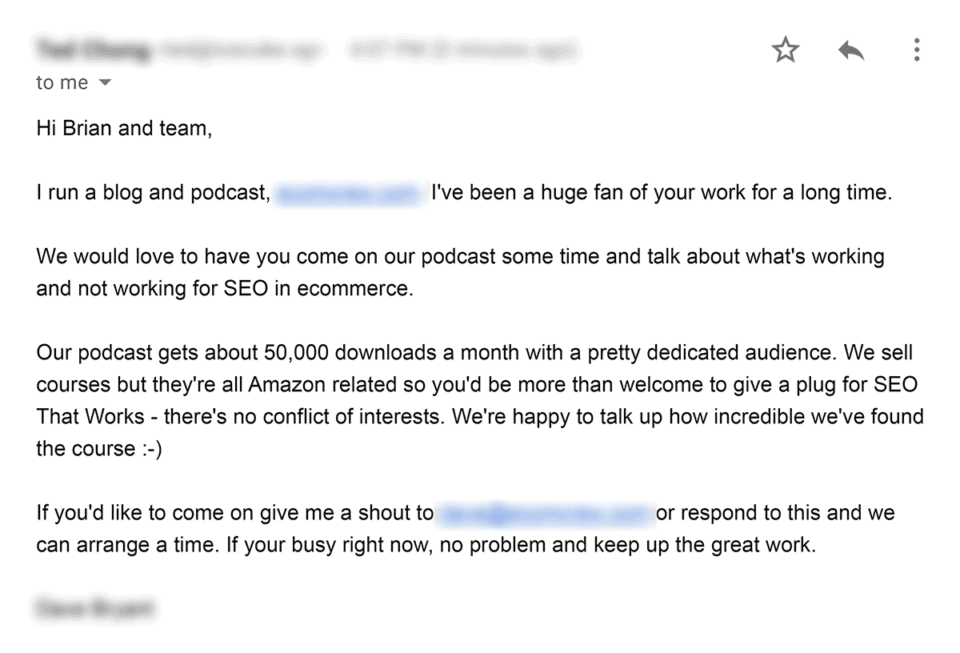
6. Build a Targeted Landing Page
Unlike only having your podcast on directories, a podcast landing page gives you an extra SEO boost.
And not just this, having a podcast landing page can serve also to aid your overall marketing effort by allowing you to implement effective landing page techniques to grow and engage your audience.
- Subscribe form to collect visitors' email
- Link to download your ebook/resource
- Link/space to leave a podcast review
- Buttons leading to different podcast platforms
- Showcasing your testimonials
- Telling the world who you've featured on your show or where you've been featured
- Include any top names that have reviewed your podcast or you like how Brian Dean of Backlinko did with his blog:
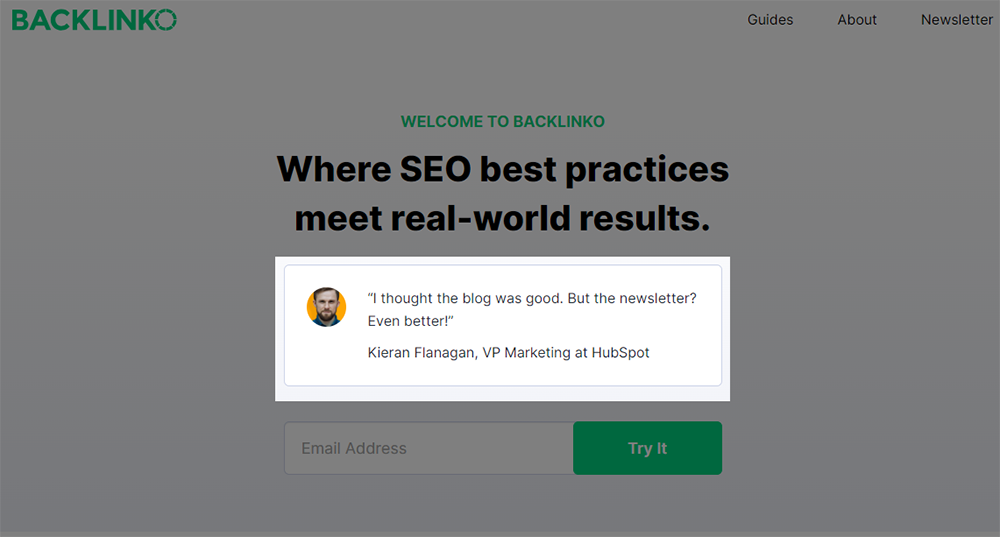
7. Double down on video
Around one-third (32%) of American listeners prefer listening to podcasts with video compared to 26% who prefer just audio.
Not just that, incorporating an AI video editor into your process gives you an extra marketing boost and enhances your visuals, making your content more appealing to a broader audience.
For example, through video podcasts, you can tap from the billion daily views on YouTube and even see a higher episode listenership and retention on Spotify.
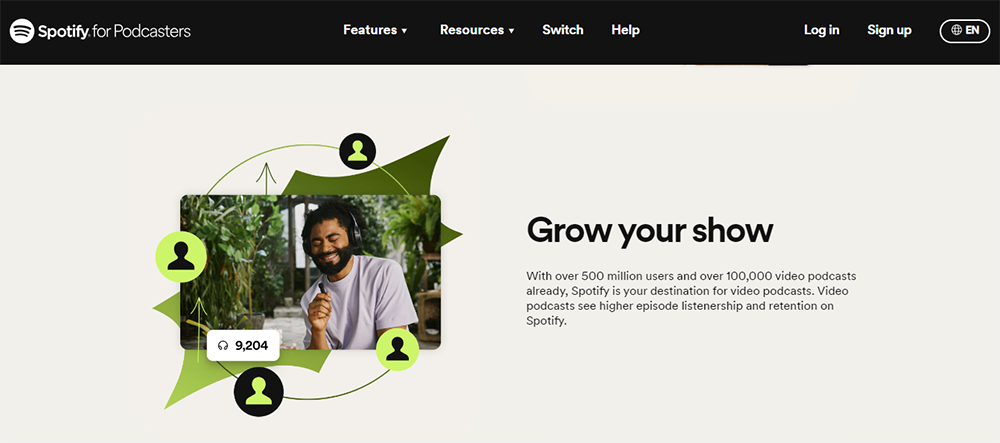
Additionally, you can easily repurpose your video into a podcast clip for sharing on YouTube, Instagram, Facebook, TikTok, etc. Since short clips will continue to streamline podcast marketing, now is the time to double down on video if you haven't yet.
And here's the catch.
You don't need a fancy Sony camera to capture your podcast video. Your microphone, script, phone camera, and a decent background are more than enough to get started.
8. Have Exclusive Content For Social Media Promotion
You'll have come across many social media posts where someone would tell audiences to comment, like, and retweet to get access to exclusive content.
Similarly, you can apply the same approach to your podcast marketing strategy using exclusive content.
We even employed this strategy ourselves with success to draw attention to our Instagram page, in this post.
Here's another example of this strategy in action, showcased on The Two Lauras' podcast Instagram profile.
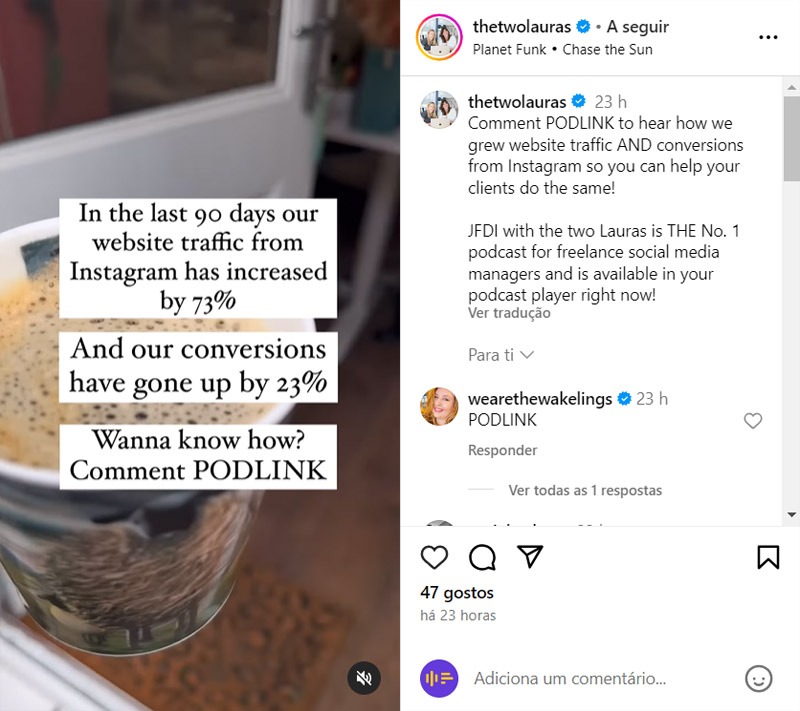
To make this promotion tactic, create an episode with exclusive content that the audiences will have to watch or listen to. Ensure the content is highly practical, offering steps that are easy to implement within minutes or hours to capture their interest immediately.
After creation, upload/publish your podcast-exclusive content. If it's a video on YouTube (recommended), make the video “Unlisted”. That way, people can only access it when you share the link with them.
Or you can offer private podcasts through Spotify using Anchor or add subscriber-only audio through the Apple Podcaster Program.
The goal here is to funnel traffic to your podcast page through your exclusive content. To make it easier for you, we've created a script you can work through on Twitter (X).
1 - Start with a question - a problem your exclusive content solves.
Ex: Want to grow on Linkedin?
2 - Insert a hook
Ex: Here's a 3-step framework you can implement today (as shared on my exclusive podcast episode)
3 - Add an easy CTA
Ex: Like, comment "Get" and retweet to get the link to this "Master episode" in your DMs immediately.
9. Use Twitter (X) Thread
X (Twitter) thread is one of the best-performing content types on Twitter (X). The organic reach you can get on X (Twitter) makes it an important medium to leverage. It's also more effective for growing your X account than using only traditional tweets.
You only have to summarize your episode into valuable touchdowns and repurpose it on X (Twitter) as threads. But if you just post a thread on X (Twitter), it is probably going to get buried by the X (Twitter) algorithm.
So, for your thread to get lots of reach, it needs to be super-engaging and capture the always-fleeting attention of X (Twitter) audiences.
Instead, we recommend this 5-step formula for sharing your podcast episode as an X (Twitter) thread and getting results.
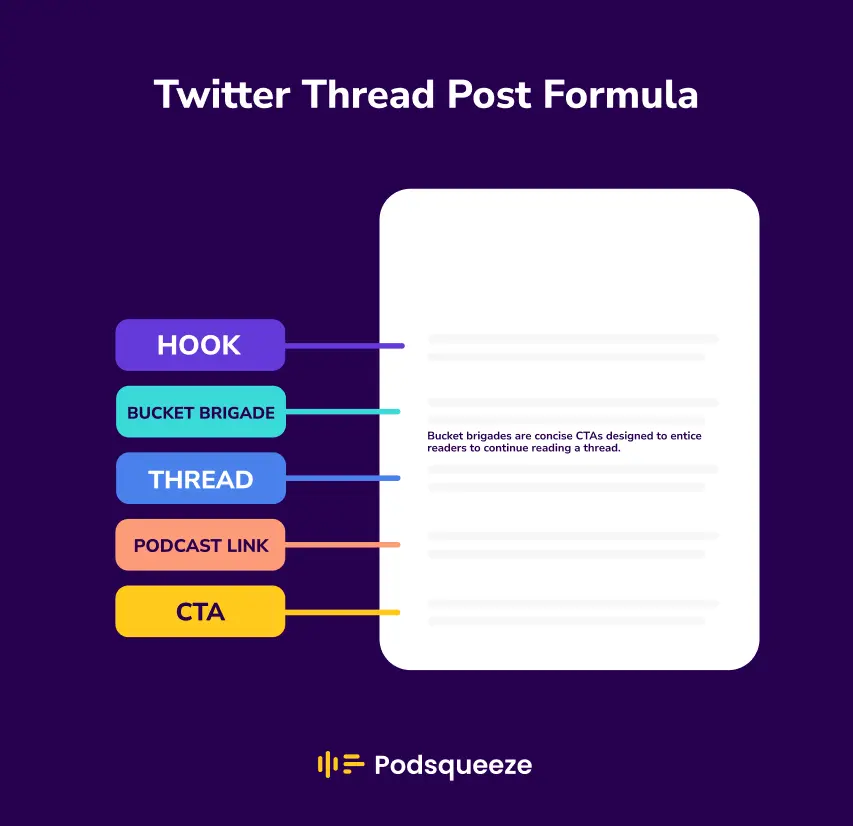
10. Explore Podcast Swapping
As the name suggests, a podcast swap happens when two podcast hosts feature each other's podcasts, co-host a show, or simply mutually promote themselves to their respective audiences.
You'll find a podcaster with similar audiences like you (you probably have some names in mind) and mutually agree to get featured on each other's show and introduce yourselves to your respective audience.
This is a strategy that can not only help you gain more listeners but also foster strategic relationships. For example, Podcast Liftoff reported a 21% growth in a very short time with podcast swapping.
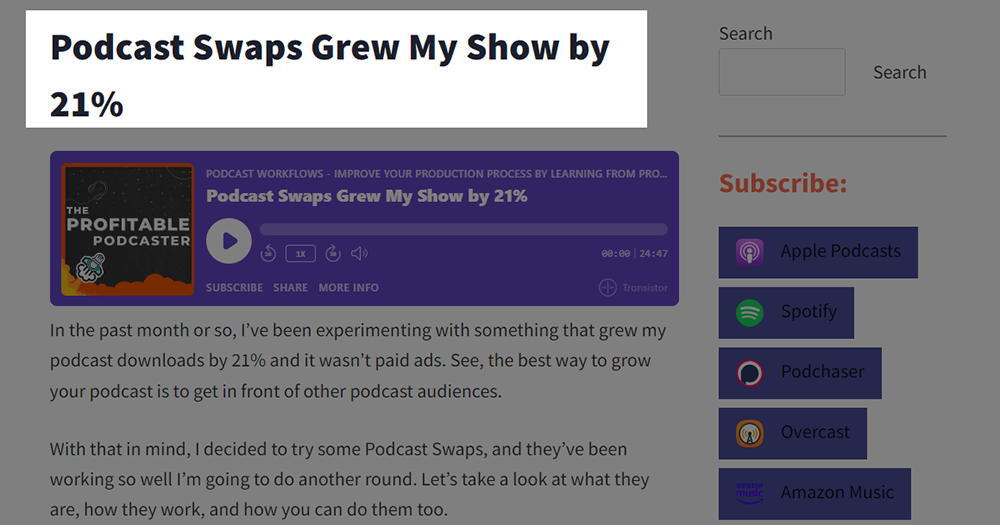
11. Find Mentions About Your Podcast
With over 80k podcast episodes published every 3 days, there might have been times your podcast has been mentioned by some incredible creators on their show that you don't know about. A strategic move here will be to find these mentions and connect with the people (guest/host) who mentioned you.
Use a tool like Podscan to find these mentions and easily connect with creators who already mentioned your show to explore collaborations, guest appearances, or cross-promotions - ultimately bringing fresh perspectives and new listeners to your podcast.
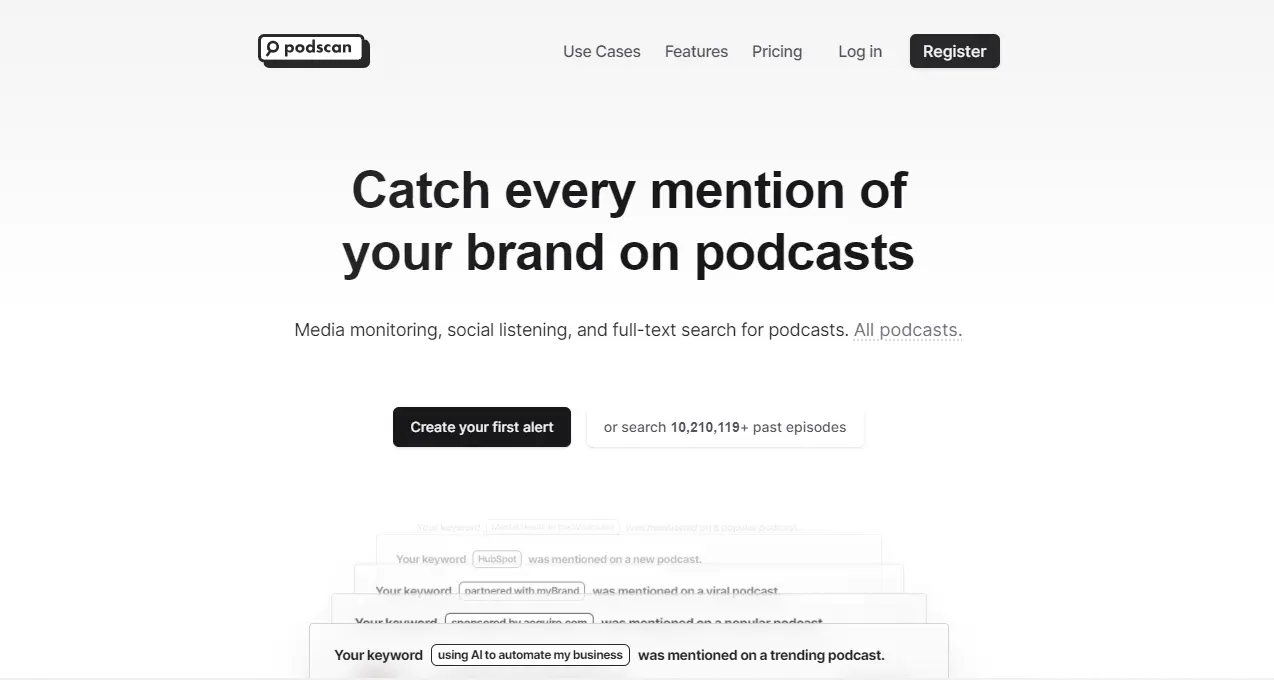
Bonus Tip: Connecting with these creators will be a breeze because anyone who has mentioned you is already acquainted with your work.
Now, Over To You
And there you've it, a detailed 10-step formula to uplift your podcast marketing strategy.
From content syndication to podcast swapping, each of the steps in this guide is comprehensive, free, and easy to carry out.
To make the most of the strategies outlined in this guide, consider creating a free Podsqueeze account to streamline your podcast content creation using AI:
- Get social media posts for your episode
- Podcast clips for repurposing on social media
- Audiograms for audio-only podcasts
- Build episode landing pages
- Generate Quote images
And more.
FAQs About Podcast Marketing Strategy
1. Is cross-promotion with other podcasts effective?
Absolutely! Cross-promotion with other podcasts is an effective way to increase the reach and discoverability of your show. Partnering with podcasts in your niche or shoulder niches can introduce your content to a wider audience and vice versa. You can also consider podcast swapping, where you feature another podcast on your show and they feature yours on theirs. This method can help you tap into a new audience and build relationships with other podcasters.
2. How do I effectively promote my podcast on social media?
Social media is a great platform to promote your podcast and engage with your audience. Utilize platforms like Instagram, Twitter, and Facebook to share engaging content, teasers, and behind-the-scenes glimpses. You can also syndicate your content on forums like Quora and Reddit to reach a wider audience and tap into niche audiences that align with your show. Additionally, you can use exclusive content to promote your show, such as offering early access to episodes or exclusive content to your followers.
3. Any tips for optimizing podcast titles and descriptions?
Crafting compelling titles and descriptions is crucial to attracting potential listeners. Use relevant keywords in your title and write a concise, engaging description that accurately represents your show. Consider using a podcast content writer such as Podsqueeze to streamline this process for you. Read more on how to craft the ideal show notes to engage and retain your listeners.
4. How to find the best name for my business podcast?
According to Fame, to find the best name for your b2b podcast, start by thoroughly understanding your niche and audience. For instance, if your podcast targets supply chain professionals, your niche is the supply chain sector, and your audience includes logistics managers, procurement officers, and users of procurement plan software.
Brainstorm names using techniques like simple and descriptive language, rhyming, alliteration, or familiar phrases. For example, "Logistics Legends" is catchy and clearly defines the content.
Use popular naming formulas such as "[Niche] [Descriptive Word]" like "Supply Chain Success Stories." Ensure the name includes relevant keywords to improve discoverability, such as "Supply Chain Insights."
Check for uniqueness by searching potential names on podcast platforms and verifying domain availability. Seek feedback from peers or potential listeners, and choose a name that is memorable, aligns with your brand values, and clearly communicates the focus of your podcast.
For instance, "Supply Chain Success Stories" is easy to remember, targets the right audience, and suggests valuable content.
Repurpose your podcast content with AI